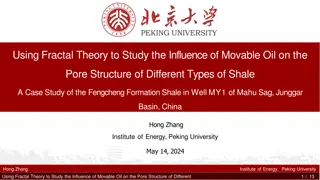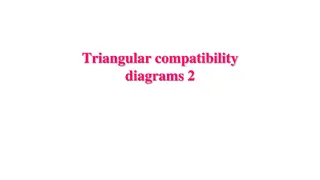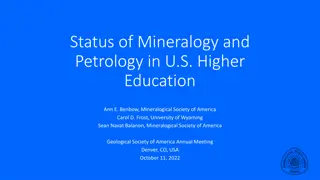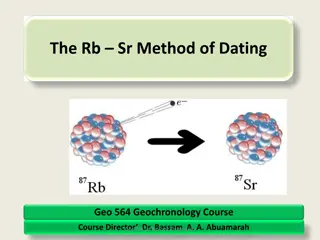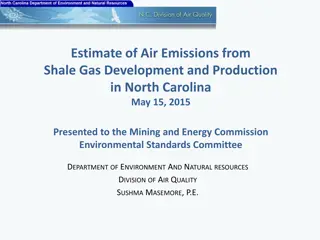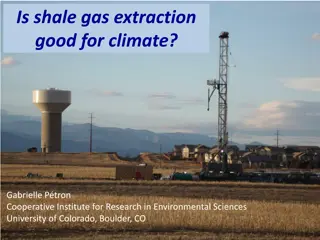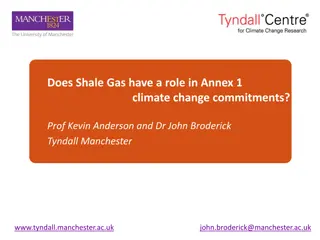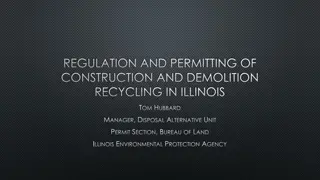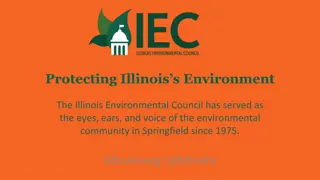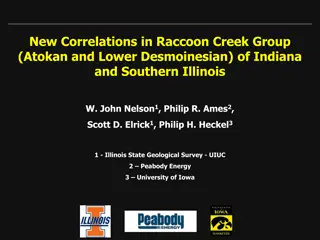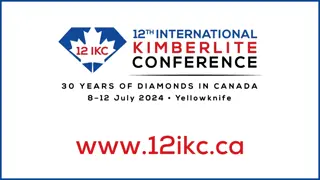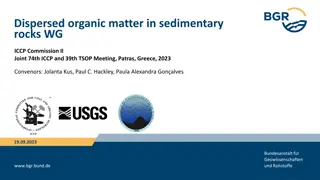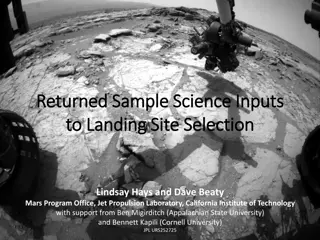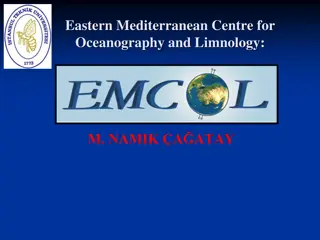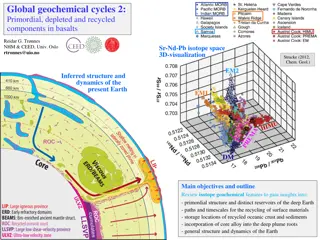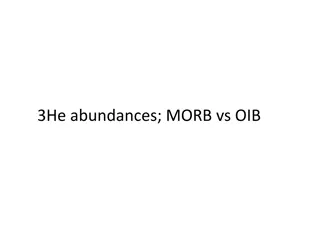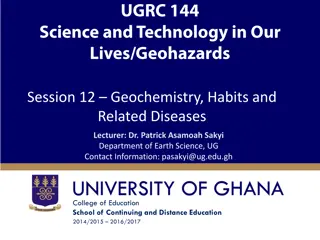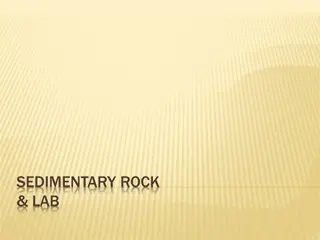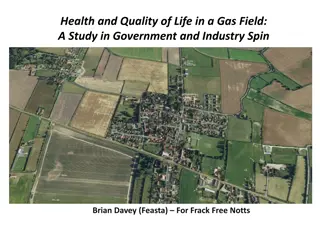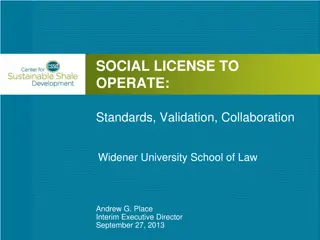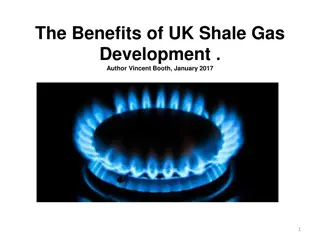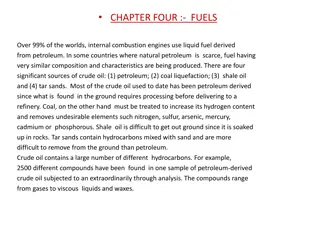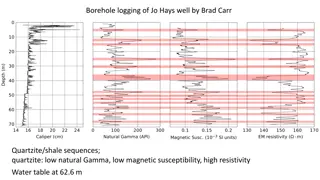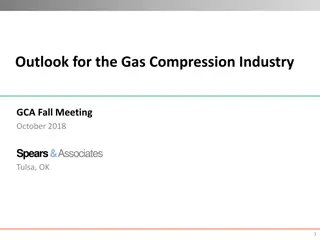Geochemistry and Petrology of Anna Shale in Southwestern Illinois
This study by Jacob Dyson, Susan Rimmer, and Scott Erick explores the geochemistry and organic petrology of the Pennsylvanian Anna Shale in Southwestern Illinois. The research aims to assess source-rock quality, determine organic matter sources, evaluate paleo-redox conditions, and investigate trace element enrichments in pyrite suns. Various samples from the Lively Grove Mine and Prairie Eagle Mine are analyzed to understand the rock quality and maturity, as well as the organic petrography of the shale. Through detailed analysis and mapping, the study sheds light on the depositional environment and conditions during the formation of the Anna Shale.
Download Presentation

Please find below an Image/Link to download the presentation.
The content on the website is provided AS IS for your information and personal use only. It may not be sold, licensed, or shared on other websites without obtaining consent from the author. Download presentation by click this link. If you encounter any issues during the download, it is possible that the publisher has removed the file from their server.
E N D
Presentation Transcript
Geochemistry and Organic Petrology of the Anna Shale (Pennsylvanian) and Pyrite Suns in Southwestern Illinois Jacob Dyson1, Susan Rimmer1, Scott Erick2 Southern Illinois University Carbondale1 Illinois Geological Survey2
Pyrite suns Disk-shaped pyrite concretions Occur at the contact between the Herrin (No. 6) Coal and the Anna Shale Range in size from 1cm to 15cm (Redrafted from: Krause, 1979 after Allgaier, 1974)
Objectives 1) Assess the source-rock quality of the Anna Shale 2) Determine sources of OM using organic petrography 3) Evaluate the paleo-redox conditions during Anna Shale deposition 4) Investigate trace element enrichments of pyrite suns
Area of study C7005 C6848 C7009 C7003 Lively Grove Mine Washington County N Core Location Herrin (No. 6) Coal Sample Pyrite Sun and Roof Shale Samples Prairie Eagle Mine Perry County 20 km 10 mi
Source rock quality and maturity 1000 TYPE I KEROGEN 900 Average Range 800 TOC 15.9 wt % 2.2-37.0 wt % TYPE II KEROGEN 700 Hydrogen Index (mg HC/g TOC) HI 225 mg HC/g TOC 54-438 mg HC/g TOC C6848 C7003 C7005 C7009 Roof Samples 600 Lower Anna Shale and TOC intervals >20% S1 1.32 mg HC/g 0.05-4.76 mg HC/g 500 S2 45.9 mg HC/g 1.2-159 mg HC/g 400 Upper Anna Shale and low TOC intervals Tmax 422 C 411-432 C 300 *Ro 0.43% TYPE III KEROGEN 200 *random vitrinite reflectance of Herrin (No. 6) Coal TYPE IV KEROGEN 100 0 0 20 40 60 80 100 120 140 160 180 200 Oxygen Index (mg CO2/g TOC)
6848 103-108 Organic petrography Average percent from visual estimates Maceral Micrinite 60.1% 40 um Other Inertinites 7.9% 7003 30-35 Bituminite 10.9% Other Liptinites 2.0% Solid Bitumen 17.8% Vitrinite 1.3% 40 um
7005 30-35 7005 30-35 40 um 40 um 7005 65-70 7005 65-70 40 um 40 um
C-S relationships Normal marine conditions line goes through the origin Data show positive intercept on the S axis Suggests an anoxic depositional environment
%Fe C-S-Fe relationships 0 C6848 C7003 C7005 C7009 Roof Samples 100 10 90 DOP 0.42 = dysoxic DOP 0.75 = anoxic/euxinic 20 80 DOP 0.42 DOP 0.51 DOP 0.73 30 S/C=0.4 70 DOP 0.51 40 60 Two trends of constant S/Fe ratio DOP 0.75 DOP 0.73 50 50 60 40 Estimated DOP suggests dysoxic and anoxic conditions 70 S/Fe=1.15 30 80 20 90 10 100 0 %C %S 100 90 80 70 60 50 40 30 20 10 0
Paleo-redox conditions TOC (wt%) Ni/Co Ni/Co 5 TOC (wt%) 20 20 0 0 40 0 1 2 3 4 5 6 7 8 9 10 0 10 Euxinic 10 30 40 Dysoxic Anoxic Oxic Dysoxic Anoxic Oxic Core C7009 109.2 109.2 109.2 Cyclic paleo-redox conditions Depth (m)109.4 109.6 109.4 109.4 Depth (m) Depth (m) Large amounts of OM deposited in anoxic intervals 109.6 109.6 109.8 109.8 109.8 Dysoxic Anoxic Oxic 10 0.4 0.9 0 1 2 3 4 5 6 7 8 9 10 0 V/Cr 5 0.4 0.5 0.6 0.7 0.8 0.9 V/(V+Ni) V/(V+Ni) V/Cr
EPMA for pyrite sun trace elements Vertical and horizontal point traverses Analyzed for Mo, Cu, Zn, As, Pb, and Cd Any concentration is below microprobe detection limits ~0.05 wt% Next step LA-ICP-MS
Paleo-redox conditions of roof samples Oxic Dysoxic Dysoxic Oxic Roof 7 Roof 7 6 6 Roof 6 Roof 6 5 5 Roof 5 Roof 5 4 4 Roof 4 Roof 4 3 3 Roof 2 Roof 1 Roof 2 Roof 1 2 2 1 1 0.00 1.00 2.00 V/Cr 3.00 4.00 0.00 1.00 2.00 3.00 Ni/Co 4.00 5.00 6.00 7.00 Roof 7 6 Pyrite suns do not occur Roof 6 5 Pyrite suns occur Roof 5 4 Roof 4 3 Roof 2 Roof 1 2 1 0.40 0.50 0.60 0.70 0.80 0.90 1.00 V/(V+Ni)
Summary Source-rock quality Type II kerogen; Average 15.9% TOC Immature - average Tmax 422 C Sources of OM Dominantly micrinite, solid bitumen, and bituminite Paleo-redox conditions Cyclic between dysoxic and anoxic conditions Trace elements in pyrite suns Not detectable to 0.05 wt% using a microprobe Paleo-redox conditions of roof shale samples Unclear relationships with pyrite sun occurrence
Thank you! Special thanks to: Dr. Dave Moecher University of Kentucky Prairie State Generating Company Barry Sargeant Knight Hawk Coal LLC Zain Abdi Southern Illinois University Carbondale Joe Devera Illinois State Geologic Survey


